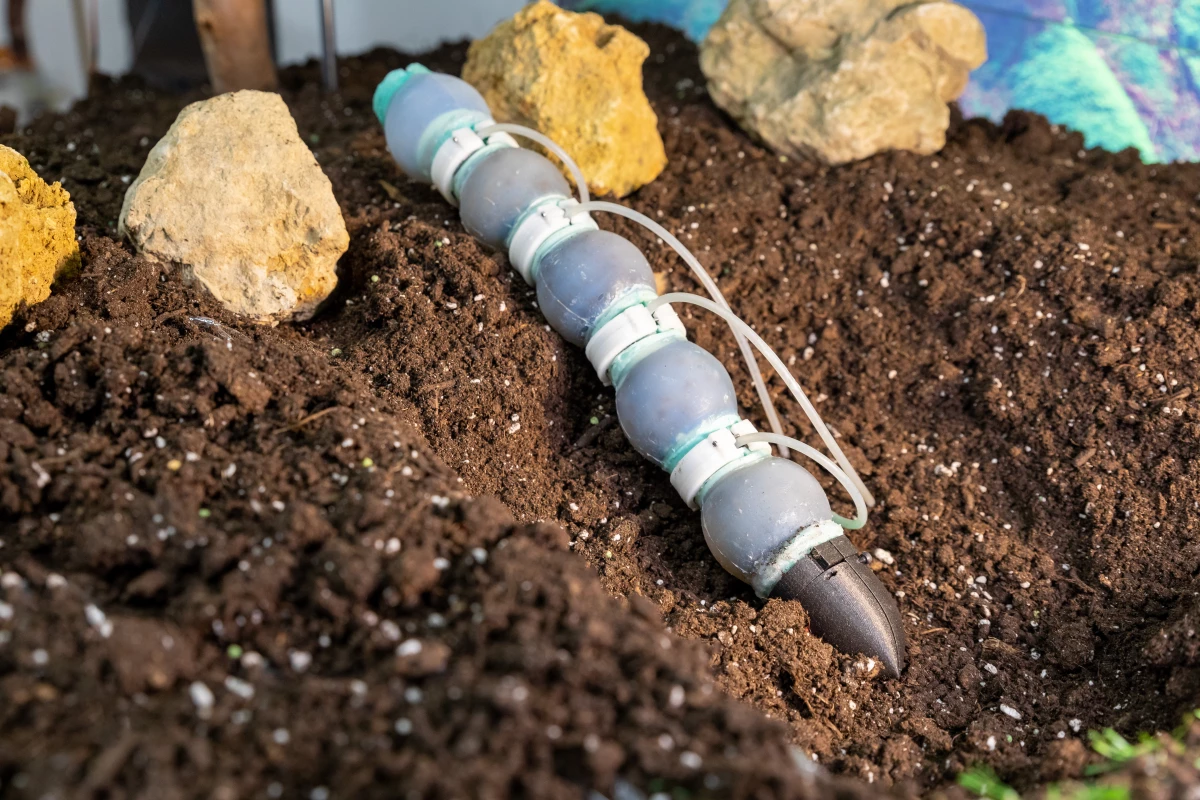Earthworms move through the soil not just by wriggling around, but by sending peristaltic waves down their bodies. A new bio-inspired robot, which employs that same strategy, could one day be used in underground exploration or even search-and-rescue missions.
An earthworm's body is made up of individual fluid-filled segments known as metameres, each one of which has a circular muscle running around it. There are also longitudinal muscles that run along the length of the worm's body.
When the circular muscles in adjacent metameres contract, they cause that part of the worm to become longer and slimmer. When the longitudinal muscles in one area contract, however, they cause that part of the worm to become shorter and fatter.
Therefore, utilizing a continuous sequence of these two types of contractions, the worm is essentially able to send "waves of fatness" running from its nose to its tail. These waves, along with dirt-gripping bristles called setae, allow the animal to tunnel through the soil.
Led by Prof. Barbara Mazzolai, a team of scientists at Istituto Italiano di Tecnologia (the Italian Institute of Technology) set out to reproduce that mechanism in a robot.

The resulting 45-cm (17.7-in)-long device is made up of five connected "peristaltic soft actuators" (PSAs). Each one of these consists of an inner bellows pipe (sort of like a miniature dryer vent hose), an outer soft elastomer skin, and a viscous fluid which is sealed in the space between the two.
The bellows lengthens when air is pumped into it, stretching the skin and allowing the fluid to lay in a thin layer – in other words, the PSA gets long and skinny. When air is drawn out, however, the bellows shortens and the compressed fluid pushes the skin outward ... so the PSA gets short and fat.
By continuously activating the PSAs in sequence – along with some help from small external friction pads which stand in for the setae – the robot is able to make its way across flat surfaces, through pipes, and through granular media.

Mazzolai and colleagues are now working on developing the technology further. A paper on their research was recently published in the journal Scientific Reports.
And no, this isn't the first robotic earthworm we've seen. Other examples, utilizing other mechanisms, have been created by teams from MIT and Cornell University.
Source: Istituto Italiano di Tecnologia via EurekAlert






